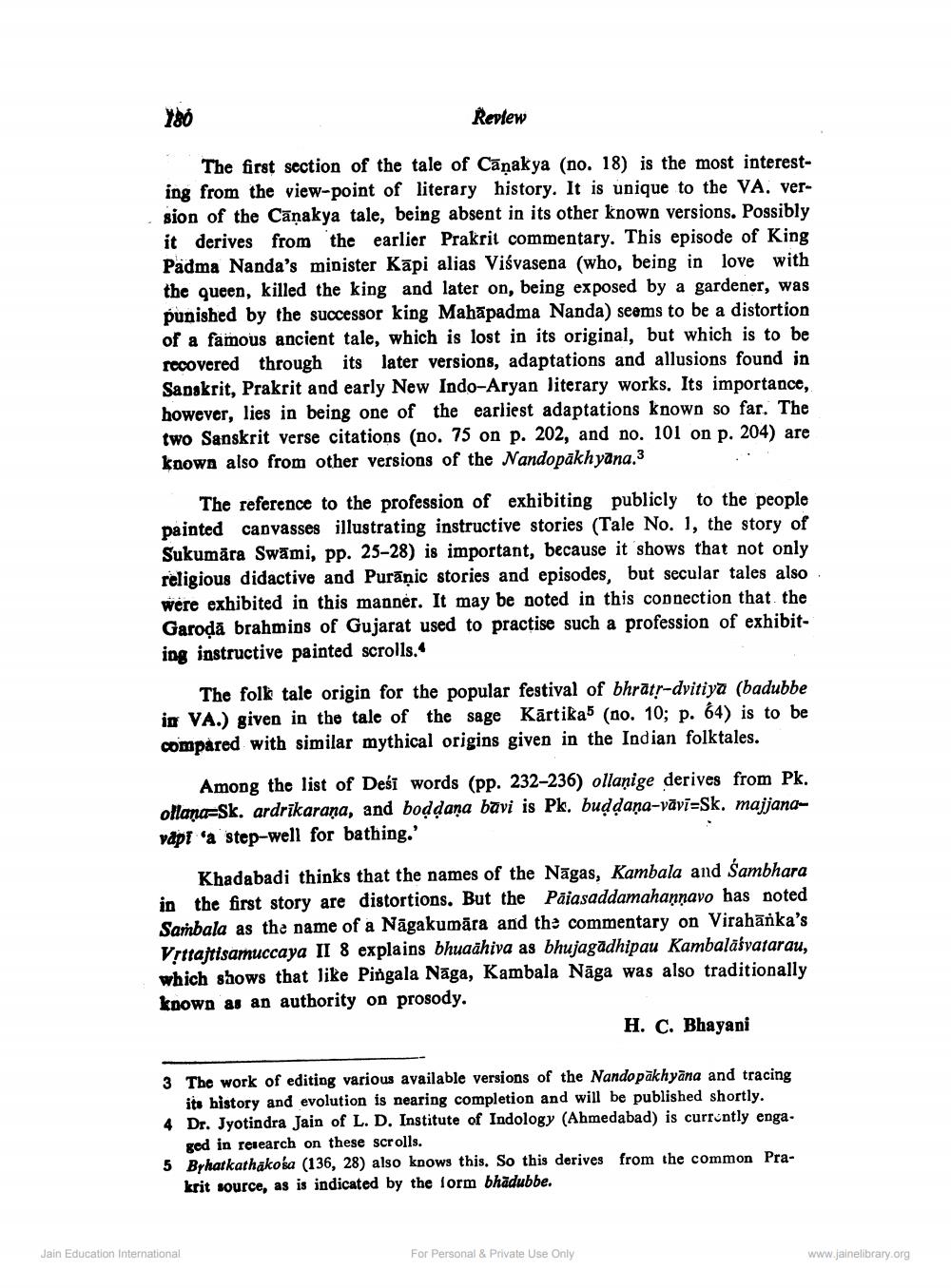________________
180
ཝེ
Review
The first section of the tale of Canakya (no. 18) is the most interesting from the view-point of literary history. It is unique to the VA. version of the Canakya tale, being absent in its other known versions. Possibly it derives from the earlier Prakrit commentary. This episode of King Padma Nanda's minister Kapi alias Viśvasena (who, being in love with the queen, killed the king and later on, being exposed by a gardener, was punished by the successor king Mahapadma Nanda) seems to be a distortion. of a famous ancient tale, which is lost in its original, but which is to be recovered through its later versions, adaptations and allusions found in Sanskrit, Prakrit and early New Indo-Aryan literary works. Its importance, however, lies in being one of the earliest adaptations known so far. The two Sanskrit verse citations (no. 75 on p. 202, and no. 101 on p. 204) are known also from other versions of the Nandopakhyana.3
The reference to the profession of exhibiting publicly to the people painted canvasses illustrating instructive stories (Tale No. 1, the story of Sukumara Swami, pp. 25-28) is important, because it shows that not only religious didactive and Puranic stories and episodes, but secular tales also were exhibited in this manner. It may be noted in this connection that the Garoda brahmins of Gujarat used to practise such a profession of exhibiting instructive painted scrolls.
The folk tale origin for the popular festival of bhrat-dvitiya (badubbe in VA.) given in the tale of the sage Kartika5 (no. 10; p. 64) is to be compared with similar mythical origins given in the Indian folktales.
Among the list of Deil words (pp. 232-236) ollaṇige derives from Pk. ollana Sk, ardrikaraṇa, and boddana bavi is Pk. buddaṇa-vavi-Sk. majjanavap! 'a step-well for bathing."
Khadabadi thinks that the names of the Nagas, Kambala and Sambhara in the first story are distortions. But the Paiasaddamahannavo has noted Sambala as the name of a Nagakumāra and the commentary on Virahanka's Vṛttaftisamuccaya II 8 explains bhuadhiva as bhujagadhipau Kambalavatarau, which shows that like Pingala Naga, Kambala Naga was also traditionally known as an authority on prosody.
H. C. Bhayani
3 The work of editing various available versions of the Nandopakhyāna and tracing its history and evolution is nearing completion and will be published shortly.
4 Dr. Jyotindra Jain of L. D. Institute of Indology (Ahmedabad) is currently enga. ged in research on these scrolls.
5 Byhatkathakosa (136, 28) also knows this. So this derives from the common Prakrit source, as is indicated by the form bhādubbe.
Jain Education International
For Personal & Private Use Only
www.jainelibrary.org




